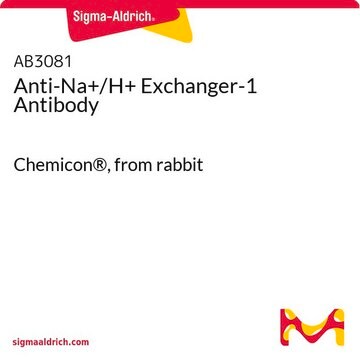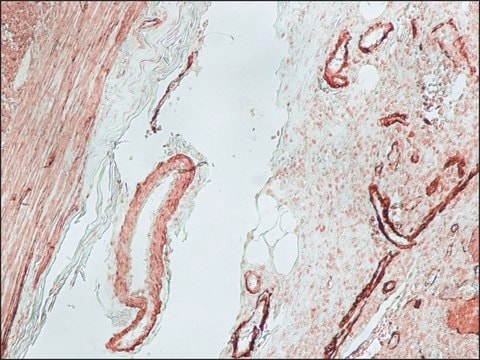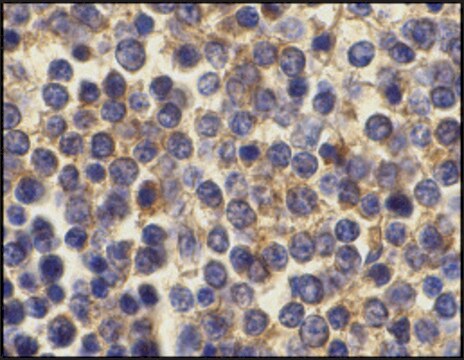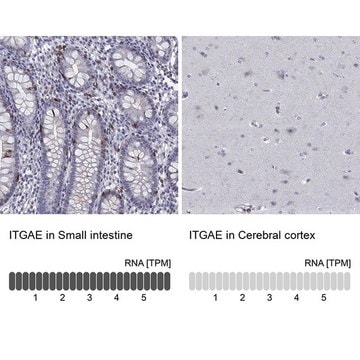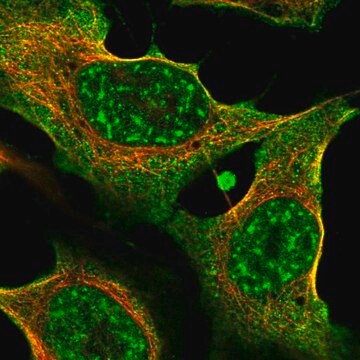MAB3140
Anti-Na+/H+ Exchanger-1 Antibody, CT, clone 4E9
clone 4E9, Chemicon®, from mouse
Sinónimos:
NHE1
About This Item
Productos recomendados
origen biológico
mouse
Nivel de calidad
forma del anticuerpo
purified immunoglobulin
tipo de anticuerpo
primary antibodies
clon
4E9, monoclonal
reactividad de especies
amphibian, fish, avian, vertebrates (including including fish, amphibians, birds and mammals)
reactividad de especies (predicha por homología)
mouse, mammals, rat
fabricante / nombre comercial
Chemicon®
técnicas
western blot: suitable
isotipo
IgG1
idoneidad
not suitable for immunoprecipitation
Nº de acceso NCBI
Nº de acceso UniProt
Condiciones de envío
wet ice
modificación del objetivo postraduccional
unmodified
Información sobre el gen
human ... SLC9A1(6548)
Descripción general
Especificidad
Inmunógeno
Aplicación
Neuroscience
Ion Channels & Transporters
Not recommended for immunoprecipitation.
Immunoblotting:
1:1,000 dilution used on a previous lot.
Optimal working dilutions must be determined by the user.
Calidad
Western Blot:
1:500 dilution of this lot detected Na+/H+ Exchanger-1 on 10 μg of Human Kidney lysates.
Descripción de destino
Forma física
Almacenamiento y estabilidad
Nota de análisis
Kidney tissue (basolateral membrane)
Otras notas
Información legal
Cláusula de descargo de responsabilidad
Not finding the right product?
Try our Herramienta de selección de productos.
Código de clase de almacenamiento
12 - Non Combustible Liquids
Clase de riesgo para el agua (WGK)
WGK 1
Punto de inflamabilidad (°F)
Not applicable
Punto de inflamabilidad (°C)
Not applicable
Certificados de análisis (COA)
Busque Certificados de análisis (COA) introduciendo el número de lote del producto. Los números de lote se encuentran en la etiqueta del producto después de las palabras «Lot» o «Batch»
¿Ya tiene este producto?
Encuentre la documentación para los productos que ha comprado recientemente en la Biblioteca de documentos.
Nuestro equipo de científicos tiene experiencia en todas las áreas de investigación: Ciencias de la vida, Ciencia de los materiales, Síntesis química, Cromatografía, Analítica y muchas otras.
Póngase en contacto con el Servicio técnico
